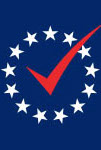Internet Voting in Estonia
Working Paper No.: 60
Date Published: 2008-11-30
Author(s):
Alexander H. Trechsel, European University Institute,
Florence, Italy
R. Michael Alvarez, California Institute of Technology
Thad E. Hall, University of Utah
Abstract:
Several countries have conducted Internet voting trials in binding public elections over the past
decade, including Switzerland, the United Kingdom, and the United States. These trials have
been conducted at the local and regional levels of government, targeting specific populations of
voters. However, Estonia—a former Soviet republic and now a full member of the European
Union—has advanced the farthest in deploying Internet voting. Since 2000, Estonia has
conducted two national elections in which all voters could use Internet voting. The first election,
in October 2005, was for local offices and the second election, in March 2007, was a national
parliamentary election. In this article, we discuss the context for the Estonian experience in
deploying Internet voting. We focus on how the Estonians have systematically addressed the
legal and technical considerations required to make Internet voting a functioning voting
platform, as well as the political and cultural framework that promoted this innovation. Using
data from our own qualitative and quantitative studies of the Estonian experience, we consider
who voted over the Internet in these elections, and the political implications of the voting
platform. Finally, we consider the lessons that other countries can learn from the Estonian
experience.
Attachment
 Internet Voting in Estonia
(Size: 426 KB)
Internet Voting in Estonia
(Size: 426 KB)
